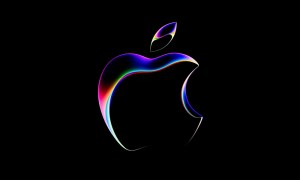

At the end of 2022, Google implored Apple to “get the message” and end the green-versus-blue bubble controversy by adopting RCS messaging. Apple’s response eventually came at WWDC 2023, where it introduced a new iOS 17 feature called Contact Posters, which instead of bringing everyone together, only furthers the us-versus-them split between Android and iOS.
If you thought the green/blue iMessage arguments could get fiery, there’s a lot more to come.
Blue good, green bad

Before we get into Contact Posters, it’s best to look at the green and blue message controversy. Apple’s iMessage messages appear in a blue bubble when sent and received by an iPhone, but when an iPhone receives an SMS message from an Android phone, it appears in a green bubble. Although it sounds innocuous enough, this difference has apparently caused rifts online, in schoolyards, in friendships, and even in relationships for years. Android’s green bubbles just aren’t as cool or desirable as blue ones, it seems.
To many people, this will sound pathetic, and in fact — to most people outside the U.S. — it’s viewed as an oddity due to the prevalence of messaging apps like WhatsApp, WeChat, and Line. Now, whether arguments about it really happen is up for debate, but there are enough stories out there to suggest it’s a big deal to some (unpleasantly narcissistic) people. A 2019 story published in the New York Post is a particular eye-opener, with some Tinder daters calling text conversations with a green bubble a turn-off, and a thread on Hacker News in 2022 seems to confirm it’s still a thing today.
But the problem goes back much further than this, with the author of this 2016 Gizmodo story saying they planned to buy an iPhone to increase their chances of relationship success. It’s not just dating life, it’s elsewhere too. In 2014, the coach of a basketball team punished players for one person’s green bubble in an otherwise “pure” blue bubble group chat. These are adults, and even such confrontations don’t happen as often as we’re led to believe, it doesn’t stop it being madness.
Contact Posters is coming

If Android phone owners are getting shunned over text messages, iOS 17 will now see them shunned by the same lunatics with voice calls too. A new feature called Contact Posters lets you completely customize the screen that appears on someone else’s iPhone when your iPhone is calling it.
You can use a Portrait mode selfie, different fonts and colors for your name, and even use a Memoji instead of your own photo. When an iPhone calls another iPhone with iOS 17, it’ll be pretty clear who it is and that the call is coming from another iPhone. And thanks to the new NameDrop feature, you’ll also be able to hold two iOS 17 iPhones together to share your Contact Poster with another person.
It could also be a way to weed out those unwanted, unclean Android calls. When an Android phone calls an iOS 17 iPhone, it will be pretty obvious it won’t be an iPhone calling. Is it a robocall, a misdial, or an Android phone? No one will know, and no one will care — they’ll just send it to voicemail. The chances of some people (Contact Posers, perhaps?) only accepting calls presented with a Contact Poster are entirely real because we live in that kind of world.
There are some who believe the iMessage’s hated green bubble has been deliberately engineered to look unappealing on an iPhone, so perhaps Apple will add a big green background to a non-iPhone call too? Whatever happens, at some point, there’s no way this won’t cause the same issue as the whole green/blue message bubble debacle. Once again, Apple has introduced a feature that clearly splits those who have an iPhone from those who don’t. It’s leveraging more personalizable, more interesting, and far more eye-catching visual tools to make you seem cool, fun, and exciting before the person you’ve called has even picked up.
What will the world do?

Why is Apple doing this when it should be bringing people together? It’s doing so because it can and because it’s entirely entitled to do so. Apple is making the iPhone ecosystem more appealing than the competition, and it’s working just as it always has. The walled garden that Apple devices live in is well-known and actually a solid reason for purchasing an Apple product in the first place. Contact Posters, like iMessage, is another benefit of being part of the club.
However, for whatever reason, some see features like these as nefarious and exclusionary. Google certainly does, probably because it has never had a clue how to make (and continue to run) a single, successful messaging platform.
So, what’s the solution? It’s actually incredibly simple. If you want iMessage and blue bubbles, Contact Posters, FaceTime calls without links, AirDrop, NameDrop, or any number of other iOS features, buy an iPhone. They are very good. What’s great is Android phones are also very good, and a normal, well-adjusted human being won’t care one way or the other what color a message is or what shows up on the screen when the phone rings. They’ll just want a good phone, and luckily, there are a lot to choose from these days.
Or you could just use WhatsApp, Line, Telegram, Signal, or any number of other apps like the rest of the world and forget about bubbles and call screens entirely.



